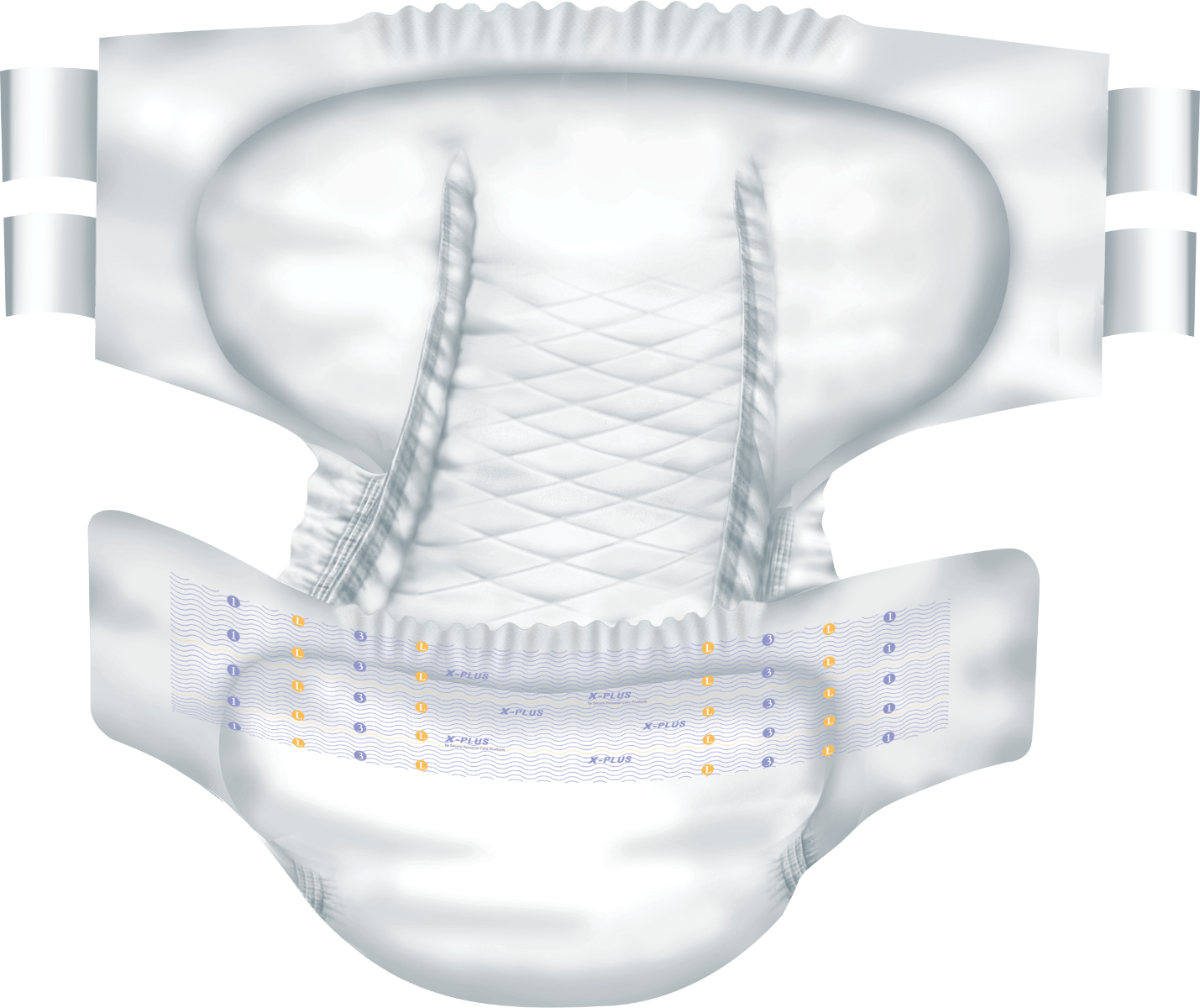
This image has format transparent PNG with resolution 1429x1200.
You can download this image in best resolution from this page and use it for design and web design.
Diapers PNG with transparent background you can download for free, just click on download button.
A diaper (/ˈdaɪpər/, NAmE) or a nappy (BrE, AuE, IrE) is a type of underwear that allows the wearer to urinate or defecate without using a toilet, by absorbing or containing waste products to prevent soiling of outer clothing or the external environment. When diapers become wet or soiled, they require changing, generally by a second person such as a parent or caregiver. Failure to change a diaper on a sufficiently regular basis can result in skin problems around the area covered by the diaper.
Diapers are made of cloth or synthetic disposable materials. Cloth diapers are composed of layers of fabric such as cotton, hemp, bamboo, microfiber, or even plastic fibers such as PLA or PU, and can be washed and reused multiple times. Disposable diapers contain absorbent chemicals and are thrown away after use.
Diapers are primarily worn by infants, toddlers who are not yet toilet trained, and by children who experience bedwetting. They are also used by adults under certain circumstances or with various conditions, such as incontinence. Adult users can include those of advanced age, patients bed-bound in a hospital, individuals with certain types of physical or mental disability, and people working in extreme conditions, such as astronauts. It is not uncommon for people to wear diapers under dry suits.
The first waterproof diaper cover was invented in 1946 by Marion Donovan, a professional-turned-housewife who wanted to ensure her children's clothing and bedding remained dry while they slept. She also invented the first paper diapers, but executives did not invest in this idea and it was consequently scrapped for over ten years until Procter & Gamble used Donovan's design ideas to create Pampers. Another disposable diaper design was created by Valerie Hunter Gordon and patented in 1948
Ever since their introduction product innovations include the use of superabsorbent polymers, resealable tapes, and elasticised waist bands. They are now much thinner and much more absorbent. The product range has more recently been extended into children's toilet training phase with the introduction of training pants and pant diapers, which are now undergarments.
Modern disposable baby diapers and incontinence products have a layered construction, which allows the transfer and distribution of urine to an absorbent core structure where it is locked in. Basic layers are an outer shell of breathable polyethylene film or a nonwoven and film composite which prevents wetness and soil transfer, an inner absorbent layer of a mixture of air-laid paper and superabsorbent polymers for wetness, and a layer nearest the skin of nonwoven material with a distribution layer directly beneath which will transfer wetness to the absorbent layer.
Other common features of disposable diapers include one or more pairs of either adhesive or mechanical fastening tapes to keep the diaper securely fastened. Some diapers have tapes which are refastenable to allow adjusting of fit or reapplication after inspection. Elasticized fabric single and double gussets around the leg and waist areas aid in fitting and in containing urine or stool which has not been absorbed. Some diapers lines now commonly include wetness indicators, in which a chemical included in the fabric of the diaper changes color in the presence of moisture to alert the carer or user that the diaper is wet. A disposable diaper may also include an inner fabric designed to hold moisture against the skin for a brief period before absorption to alert a toilet training or bedwetting user that they have urinated. Most materials in the diaper are held together with the use of a hot-melt adhesive, which is applied in spray form or multi lines, an elastic hot melt is also used to help with pad integrity when the diaper is wet.
Some disposable diapers include fragrance, lotions or essential oils in order to help mask the smell of a soiled diaper, or to protect the skin. Care of disposable diapers is minimal, and primarily consists of keeping them in a dry place before use, with proper disposal in a garbage receptacle upon soiling. Stool is supposed to be deposited in the toilet, but is generally put in the garbage with the rest of the diaper.
Buying the right size of disposable diaper can be a little difficult for first time parents since different brands tend to have different sizing standards. Baby diaper sizes in general are based on the child's weight (kg or lbs) and not determined by age like in clothing or shoes.
Common disposable baby diaper brands in the US include Huggies, Pampers, and Luvs.
In this page you can download free PNG images: Diapers PNG images free download, diapers for kids, children